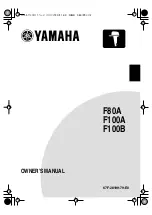7
ispMACH 4000ZE Pico Development Kit
Lattice Semiconductor
User’s Guide
3.
Select Switch bank pattern 0000 (decimal up counter).
The LCD displays a decimal up-counter. The counter uses a divided OSCTIMER clock source set for 5 kHz
nominal (TIMER_DIV=1024). 5 kHz is further divided to produce a count frequency of < 2 Hz. Use the voltme-
ter technique in step 1 to measure core current.
4.
Select Switch bank pattern 1000 (CPLD core current meter).
The LCD displays the VMON1 Icccore in µA units as the CPLD OSCTIMER clocks the counter and shift regis-
ter design modules at 5 MHz and the LCD at < 2 Hz. At this higher frequency the core current increases.
5.
Select Switch bank pattern 0010 (left shift).
The LCD displays the 21-bit shift register module operating on each segment at < 2 Hz.
6.
Experiment with other functions and measurements of the Pico Power Demo
.
If the Pico board battery is missing you may connect the Pico board to a USB socket with the cable provided to
enable the USB 5V supply rail.
I
2
C GPIO Expansion Demo
This demo illustrates I
2
C traffic between a PC host running the I
2
C Hardware Verification Utility program (PicoView)
and the Pico board. Data is available at the expansion header landing or LCD display. Control and status registers
of the I
2
C master and slave modules can be read or written via the PicoView user interface. These instructions
highlight the LC4256ZE, providing general-purpose I/O for an I/O-constrained microprocessor.
Figure 5. GPIO I
2
C Expansion Demo
4-bit DIP
Switch
15X2
Header
I
2
C Address
8
4
Counter
Shift
Register
POWR6AT6
Register
General
Purpose I/O
DIP
Switch
3-char 7-seg
LCD
24
Lamp
Test
ispMACH4256ZE
ispPAC-POWR6AT6
ADC
I
2
C Slave
I
2
C Slave
Trim
Cells
Control
Logic
6
I
2
C Address
VMON
6
Processor (PicoView)
2
I
2
C over USB
I
2
C Address
RO
Control
Register
R/W
Counter
Register
POWR6AT6
Register
General
Purpose I/O
DIP
Switch
R/W
WO
R/W
RO
15X2
Header
VMON[1-6]
RO
POWR6AT6
I
2
C Address
I
2
C Master
Shift
Register
R/W
ispMACH 4256ZE
ispPAC-POWR6AT6
R/W
15X2
Header
VMON1 – Core Current
VMON2 – I/O Current
VMON3 – Spare 1
VMON4 – Spare 2
VMON5 – 5V USB
VMON6 – 3V Battery


















